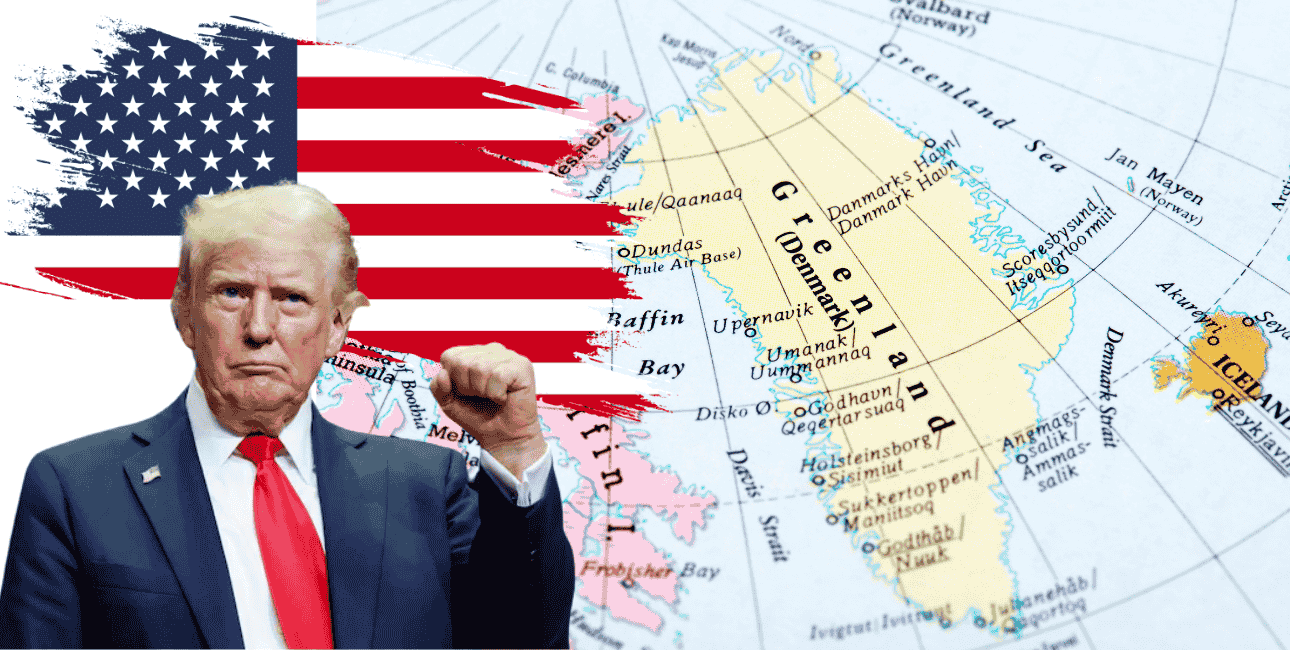Russia appears to have shifted its stance on Greenland, initially distancing itself from the US President’s threats to annex the island in March 2025, but now threatening a military response if an armed conflict were to break out on this strategically located island.
Russia’s ambassador to Denmark has warned of “military and technical measures” if an armed conflict were to break out over Greenland.
“In the context of a sharp aggravation of the international situation, the consequences of which hurt the state of affairs in the Arctic, the conflict around Greenland will certainly have a detrimental impact on regional security. This will require Russia to take military-technical measures adequate to emerging threats,” Ambassador Vladimir Barbin stated at an interview with state-run news agency RIA Novosti.
He cited growing tensions over the US President’s long-standing ambitions to acquire the resource-rich and strategically placed island that lies within the sovereignty of Denmark, a NATO member and US ally.
The Russian diplomat also alleged that Denmark was considering building a military base on the island as a hedge against Donald Trump’s ambitions and what it considers a looming security threat posed by Moscow.
The Russian envoy’s remarks are understood to be in line with the broader Russian backlash against NATO’s alleged efforts to use the Arctic as a “springboard for possible conflicts,” as emphasized by Russian President Vladimir Putin in the past.
Notably, these comments follow the Danish Parliament’s ratification of the US-Denmark Defense Cooperation Agreement (DCA) in June 2025, which essentially allows the United States to deploy troops and military assets at three Danish airbases: Aalborg, Karup, and Skrydstrup.
The agreement marks a historic shift in Denmark’s policy against hosting foreign troops on its soil and has been influenced by Russian aggression in Ukraine.
The DCA grants US forces broad access to these bases for military activities, including training, logistics, and equipment storage, without Denmark having a say over the types of weapons deployed. Thus, raising concerns in Moscow about NATO’s proximity to Russia’s borders, particularly near the Kola Peninsula and Kaliningrad of Russia.
The US, for one, has a permanent military base, Pituffik Space Base (formerly Thule Air Base), in Greenland as part of a long-standing agreement between the two countries for mutual defense within the NATO framework.
Pituffik hosts radar systems for tracking ballistic missiles and satellites, crucial for countering Russian and Chinese activities in the region. It is precisely for this reason that the military activity taking place in this region is of interest to Russia.
The US Wants To Annex Greenland
Since Trump became the US President in January, he has repeatedly called for the annexation of resource-rich Greenland, much to the chagrin of Greenlanders and the Danish government.
“I think we’re going to have it,” Trump said in March. “I don’t really know what claim Denmark has to it, but it would be a very unfriendly act if they didn’t allow that to happen because it’s for the protection of the free world.”
The Danish government, supported by the rest of Europe, has condemned these calls that represent a direct assault on its sovereignty.
There are both military and financial reasons for Donald Trump’s interest in Greenland. Greenland is strategically located in the Arctic to monitor northern airspace, which is likely to be crossed by enemy military planes or intercontinental ballistic missiles in the event of an attack on North America. Donald Trump has repeatedly emphasized that he needs Greenland for national security.
Furthermore, it would be very beneficial for trade and shipping. Situated near the Northwest Passage sea route, the island links North America and Europe, or the Atlantic and Pacific oceans. Due to the melting of Arctic ice sheets brought on by global warming, Greenland is expected to play a key role in the development of a new, much faster northern shipping route through the Arctic, which would link Europe and North America.
Denmark has launched an effort to protect Greenland from Trump, including a huge hike in defense spending. On January 27, it announced that it would spend 14.6 billion Danish crowns, equivalent to $2.05 billion, to enhance its military presence in the Arctic. The move aims to enhance the Danish military presence in the territory — a headache for Russia and the US.

However, despite the mistrust between the US and Denmark, the latter is dependent on the US for its security. Russia’s invasion of Ukraine and the rise in hybrid threats, such as GPS jamming and underwater cable disruptions in the Baltic and Arctic, have led Denmark to view the US presence as a deterrent to Russian aggression.
Denmark has strengthened its ties with NATO amid apprehensions that Russia could attack NATO within the next few years.
The US-Denmark DCA allows US troops access to Thule Air Base in Greenland, but includes a critical clause permitting Denmark to terminate the agreement if the U.S. attempts to annex Greenland.
This legal safeguard ensures Denmark retains control over Greenland’s status. Thus, indicating that Denmark is looking to protect Greenland from both Russia and the US.
That said, the Russian envoy’s recent remarks nonetheless represent somewhat of a U-turn, especially since Putin had earlier acknowledged Trump’s claims and distanced himself from what he considered to be an issue between the US and Denmark.
Russia’s U-Turn On Greenland
Speaking in March about intensifying rivalry in the Arctic region and Russia’s plans to strengthen its global leadership in the region, President Putin said, “America’s plans concerning Greenland are serious.”
“These plans have deep historical roots. And the US will continue to systematically pursue its geo-strategic, military-political, and economic interests in the Аrctic. As for Greenland, this is a matter for two specific countries. It has nothing to do with us,” the Russian President noted.
The Russian President went on to say that the US has entertained the idea since the 1760s. “Back then, the US administration considered the possibility of annexing Greenland and Iceland. But the idea failed to win congressional approval,” he said.
He also recalled the territorial swap agreement between the United States, Germany, and Denmark in 1910. It would have given the US sovereignty over Greenland, but “the deal failed.” “In other words, there were serious US plans about Greenland in the past. As I have just said, these plans are deeply rooted in history,” Putin added.
Notably, these comments were made when Russia and the US were looking to rebuild ties. They came days after Trump and Putin spoke on the phone to discuss an end to the grinding Ukraine war and lasting peace in the region. This call was followed by peace talks that began in Saudi Arabia, and Russia’s nod to a naval ceasefire in the Black Sea.
Trump launched a bid at rapprochement with Putin shortly after starting his second term in January. He pivoted to Putin and berated the Ukrainian President Volodymyr Zelensky in the Oval Office. The Russian President reciprocated, steering clear of commenting on Trump’s ambitions in the Arctic and Greenland, despite being a significant stakeholder.
However, the calculus changed after Ukraine’s drone attack on Russian bomber bases, and the US forces joining the war against Iran.
Despite the sweet talking between the two sides, Russia intensified the attacks on Ukraine through June 2025, frustrating Trump, who had promised to end the war.
Earlier this month, the US announced a halt in arms deliveries to Ukraine amid concerns of its own stockpiles running dry. However, this decision was reversed, with Trump stating that Putin “talks nice and then he bombs everybody in the evening.” This was followed by a clear threat to Russia: agree to a peace deal in 50 days or face sanctions and tariffs.
Russia, on its part, has dismissed these warnings and intensified night-time aerial strikes on Ukraine.
However, it is safe to say that the drastic change in Russia’s position on Greenland comes amid a seismic shift in US and Russian foreign policy, marked by a return to suspicion rather than mutual cooperation.
- Contact the author at sakshi.tiwari9555(at)gmail.com
- Follow EurAsian Times on Google News




